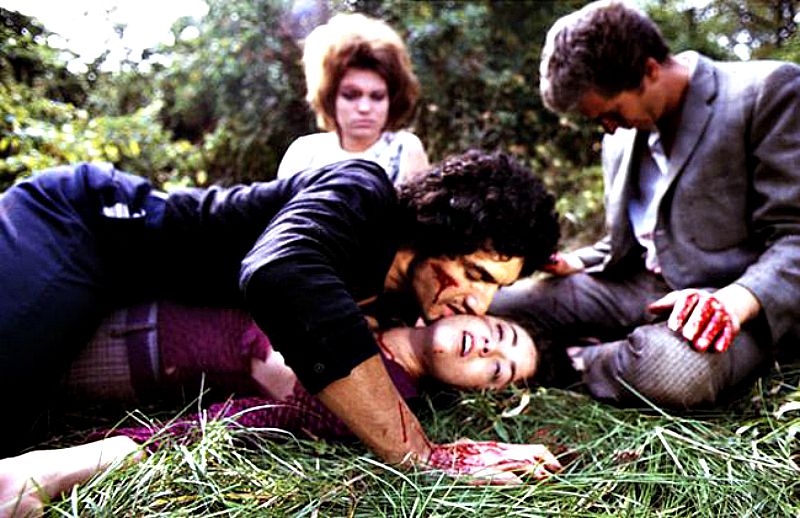What fresh Hell is this?
The 1989 film Return of Swamp Thing is one of the many bayou-set films that I’ve watched recently. On most streaming sites, it is listed as being a “horror film” and there’s a few horror elements to be found in the film. There’s mutants and hybrids and evil moonshiners. There’s a lot jokes that are so corny that you might get scared just from hearing them. I can accept the idea that this film is technically a part of the horror genre but the film is more of a comedy than anything else. That’s not a complaint on my part, by the way. I knew what I was getting into as soon as I saw that it was directed by Jim Wynorski. Jim Wynorski has been poking fun at himself and his films for longer than I’ve been alive.
Return of Swamp Thing is a sequel to Wes Craven’s 1982 Swamp Thing, a film that I haven’t seen but which I’ve been assured was considerably more serious than the sequel. (That’s the difference between Craven and Wynorski.) The film features Louis Jourdan as Dr. Arcane, a mad scientist who lives in a mansion in Louisiana. Dr. Arcane is obsessed with finding the secret to immortality, which he thinks lies in splicing together different strands of DNA. As a result of Arcane’s experiments, the swamp is now crawling with bizarre human/animal hybrids. The bayou is no longer a safe place but, fortunately, the bayou has a protector! Swamp Thing (Dick Durock) is a human-plant hybrid who wanders around the swamp and beats up evil doers. Swamp Thing is described as being a humanoid vegetable but he really just looks like a stuntman wearing a green costume.
Abby Arcane (Heather Locklear) is Dr. Arcane’s stepdaughter. She thinks that Arcane had something to do with her mother’s death and, of course, he did. Abby heads down to the swamp to confront Arcane but, unfortunately, it turns out that she’s in over her head when it comes to surviving in the bayou. When she’s not being chased by the weird mutant creatures, she’s having to deal with toothless moonshiners. Do you know what the worst bayou is? Bayouself! (Did I already tell that joke this month?) Fortunately, Abby is not alone for long because Swamp Thing emerges from the water and protects her. Abby quickly falls in love with Swamp Thing.
“I’m a plant,” Swamp Thing tells her.
“I’m a vegetarian,” she replies, which I guess means she’s going to cannibalize Swamp Thing after he’s no longer any use to her. Yikes! Look out, Swamp Thing!
Dr. Arcane wants to use Abby’s DNA for his experiments. Swamp Thing decides to protect Abby and the two dumbass kids who keep following him around. It’s time for a battle in the bayou!
Obviously, Wynorski does not approach this material seriously or with a hint of subtlety and that’s definitely the right approach to take. The sight of Louis Jourdan in the Louisiana bayous is so ludicrous that you have no choice but to laugh at it. That said, the film is never quite as funny as one might hope. It’s easy to imagine it working as a 30-minute pilot for a Swamp Thing sitcom but, as an 90-minute film, it quickly runs out of gas. Louis Jourdan looks bored but Dick Durock is amusingly earnest as Swamp Thing. Heather Locklear shows a flair for comedy but the box office failure of The Return of Swamp Thing pretty much ended her film career before it began.
After this, I think I’m going to avoid the swamp for a while.


 I have been dreading this moment for a while.
I have been dreading this moment for a while.



